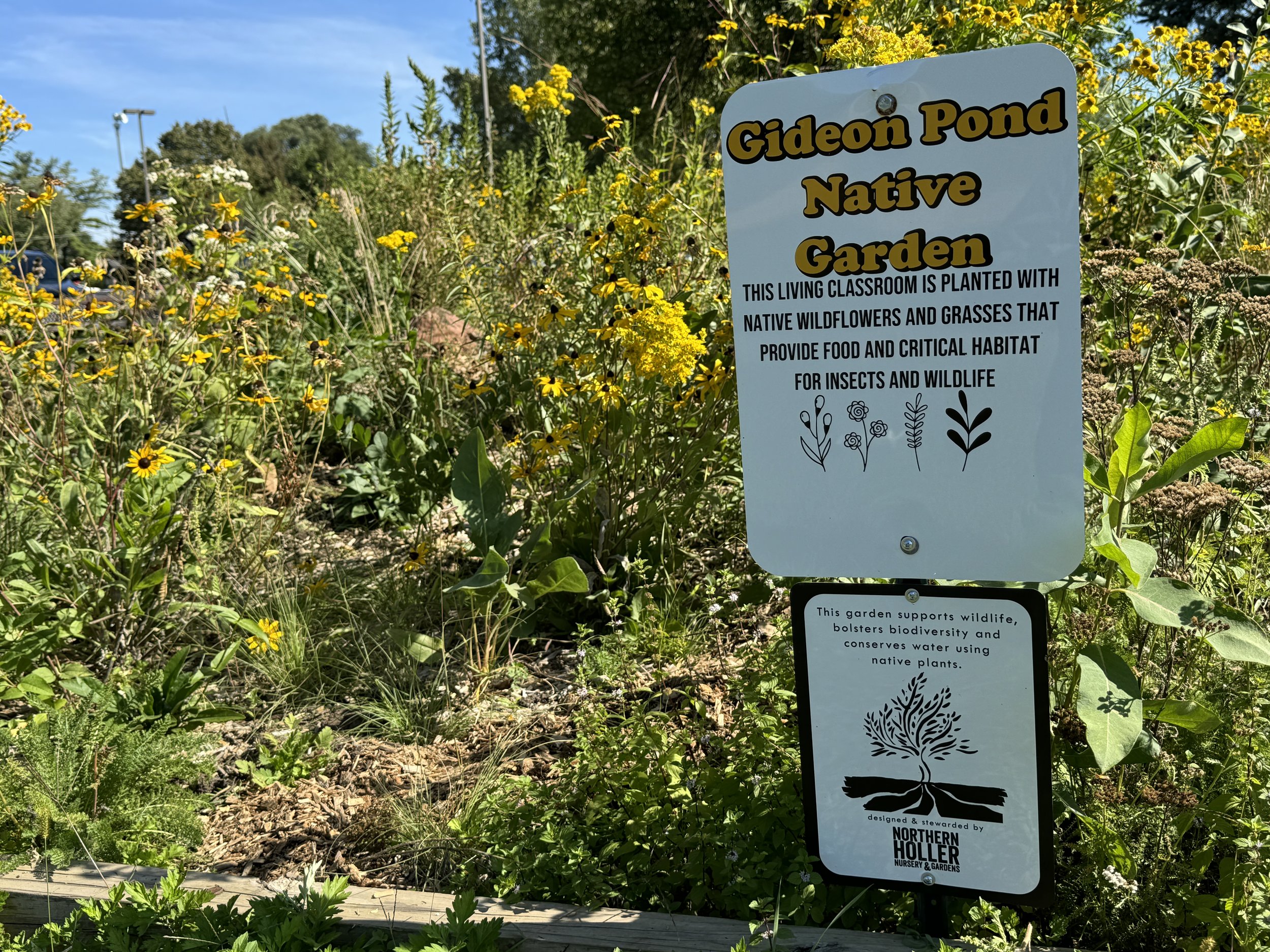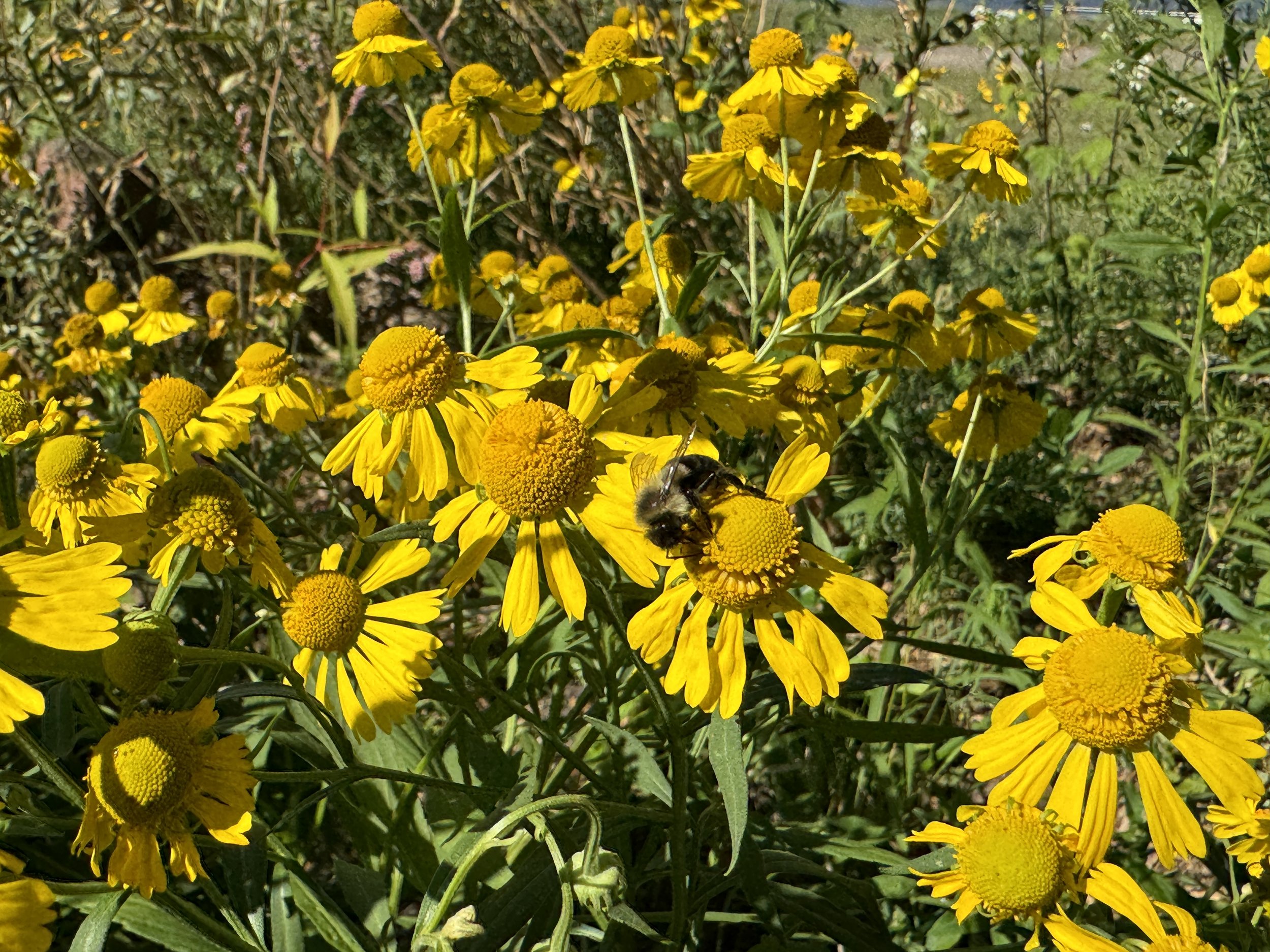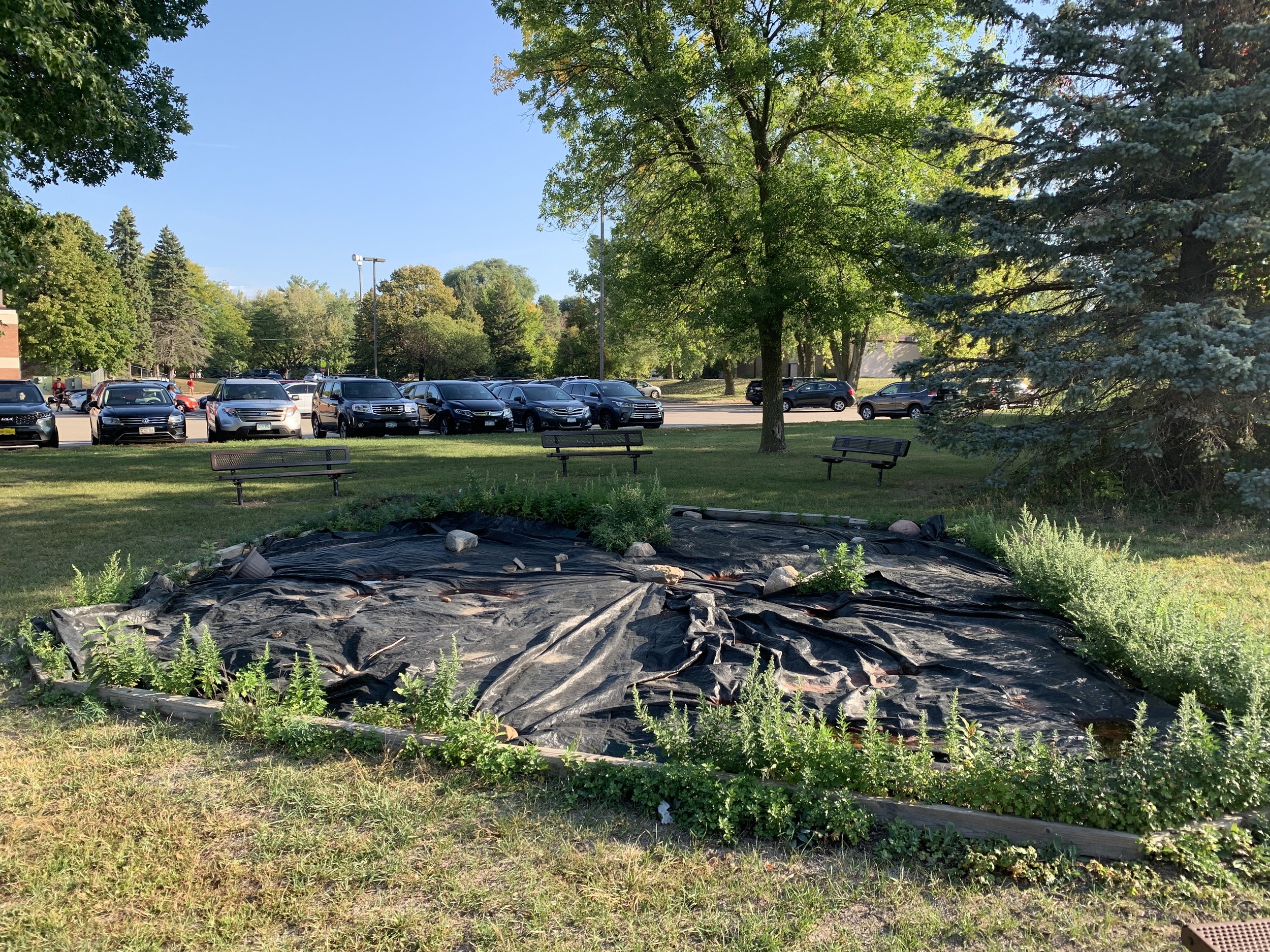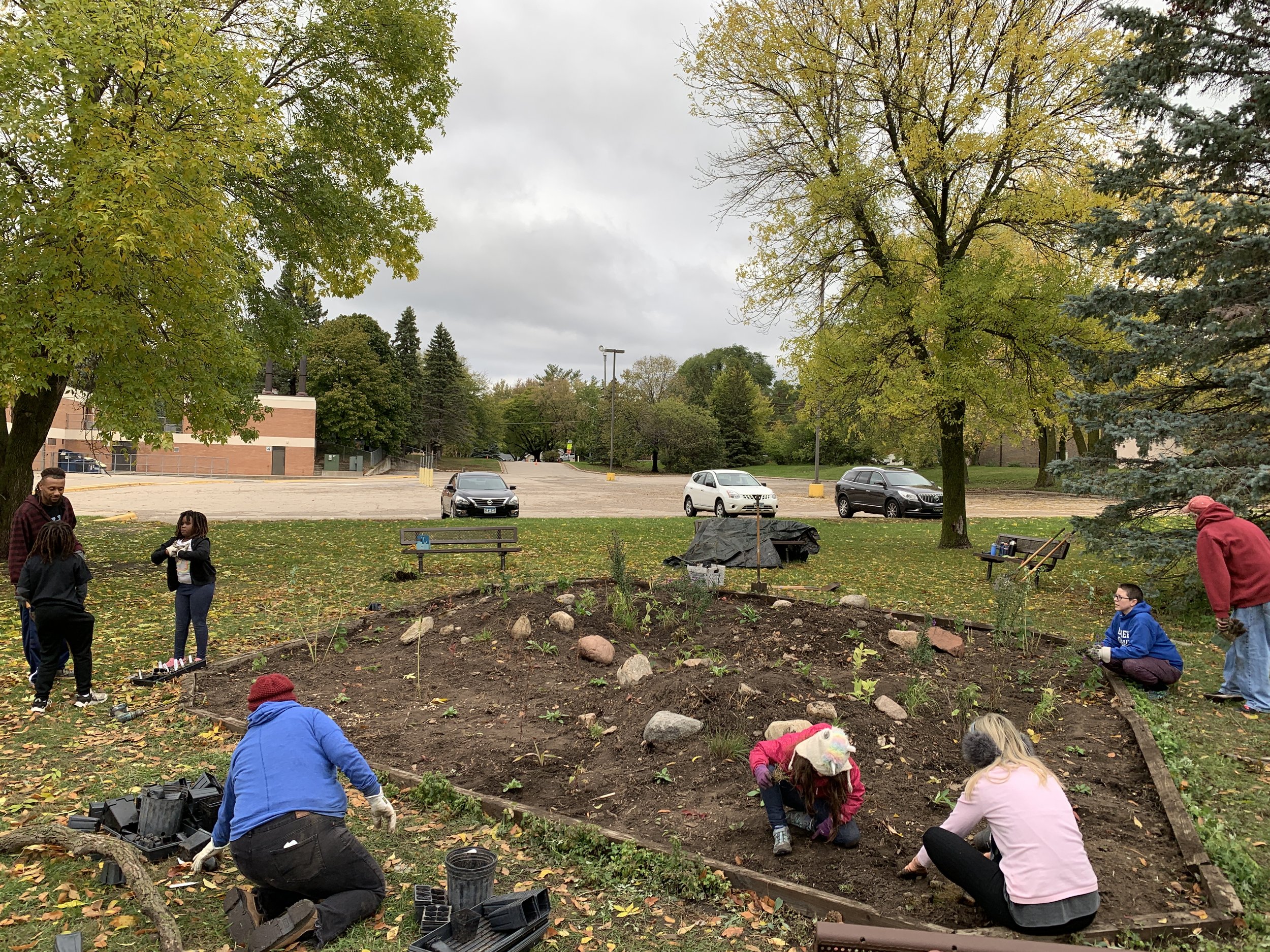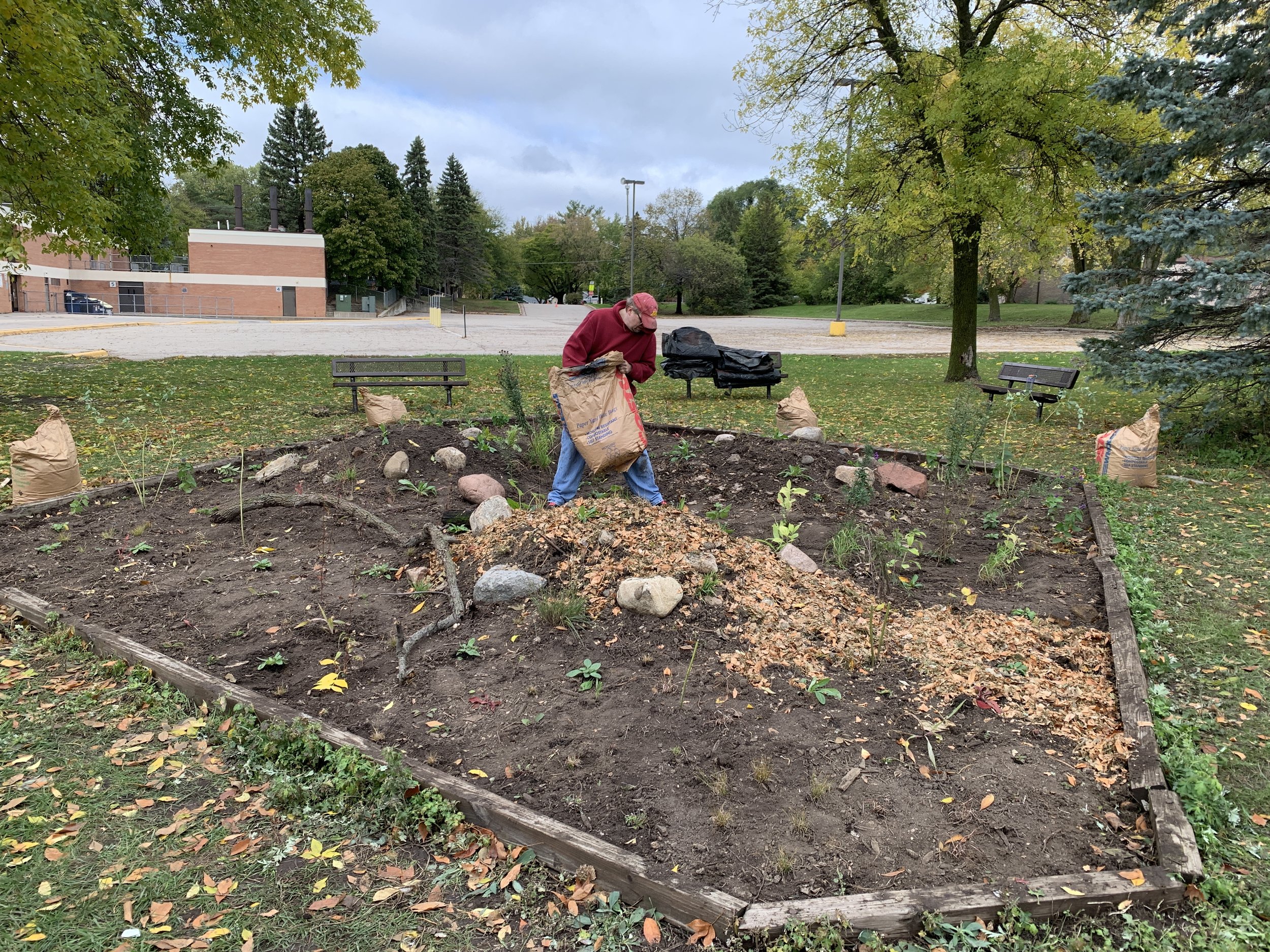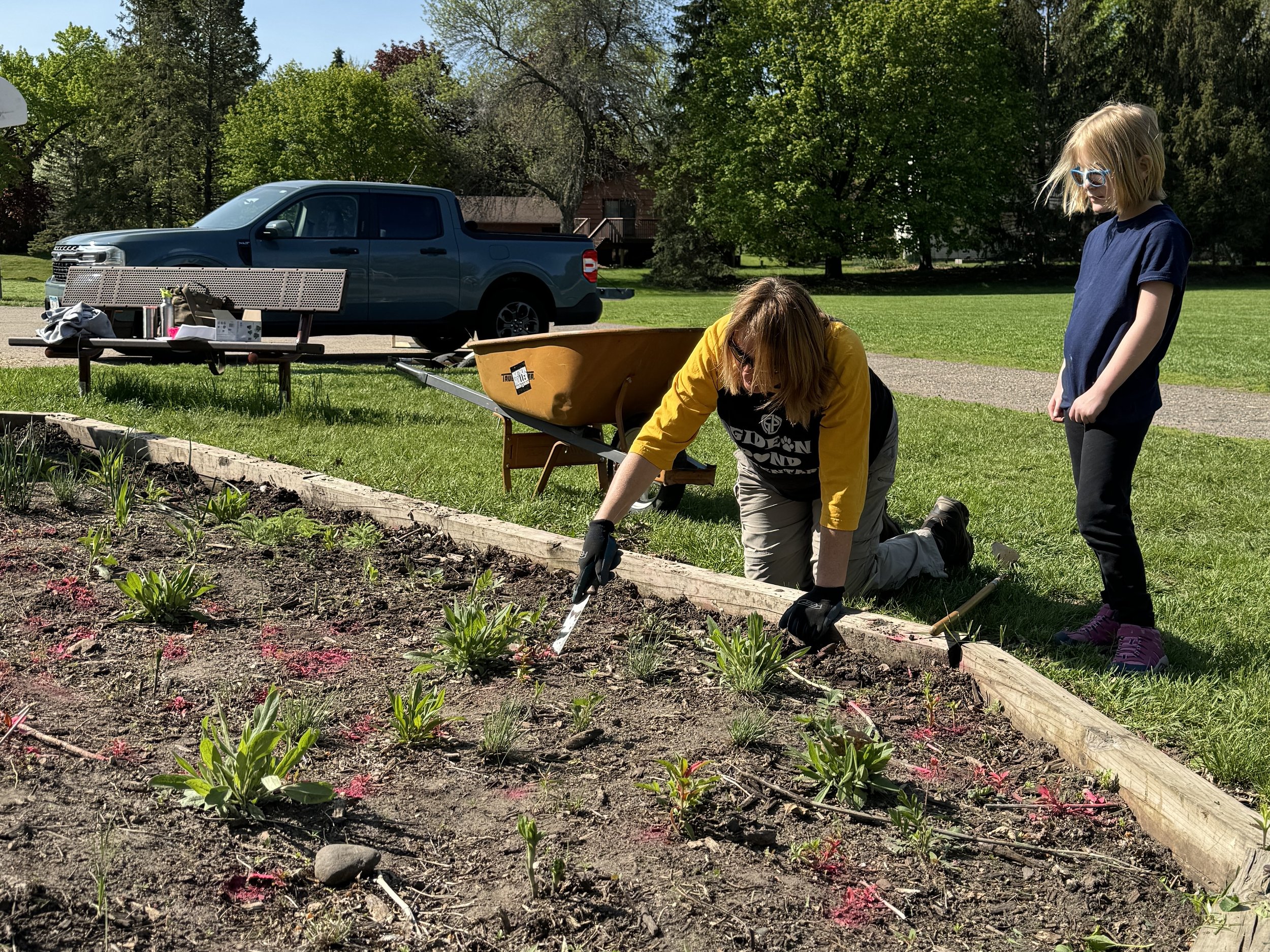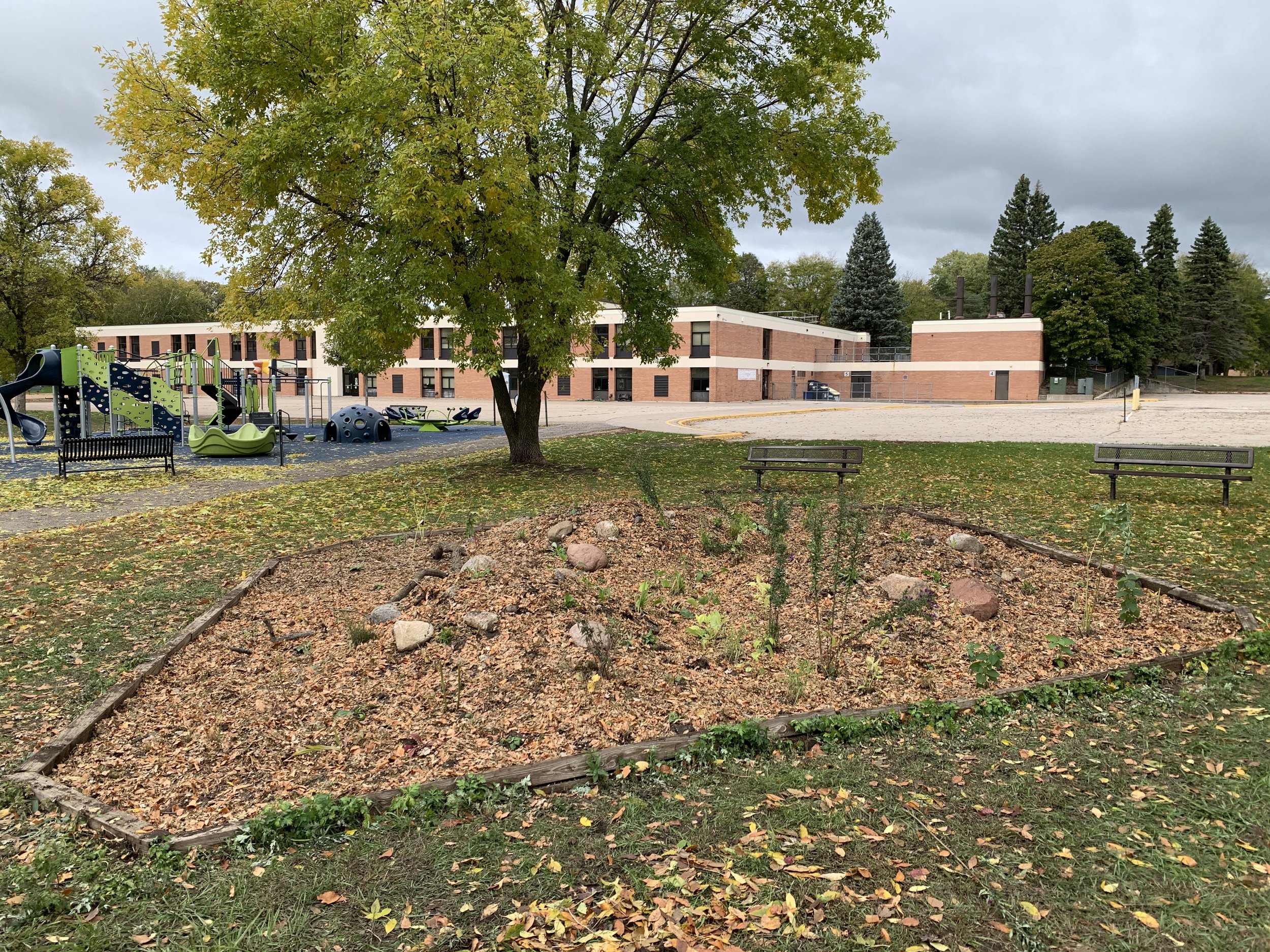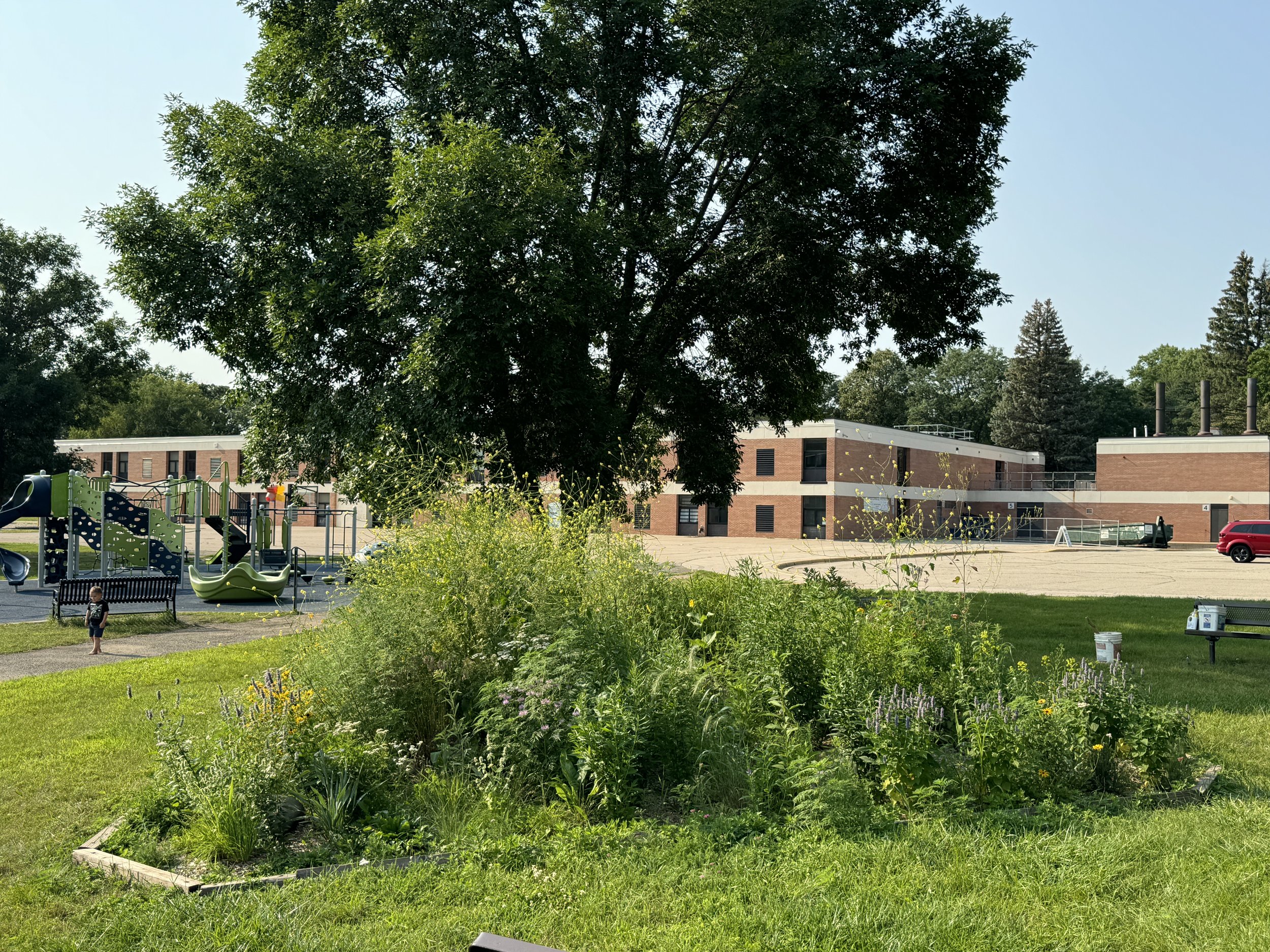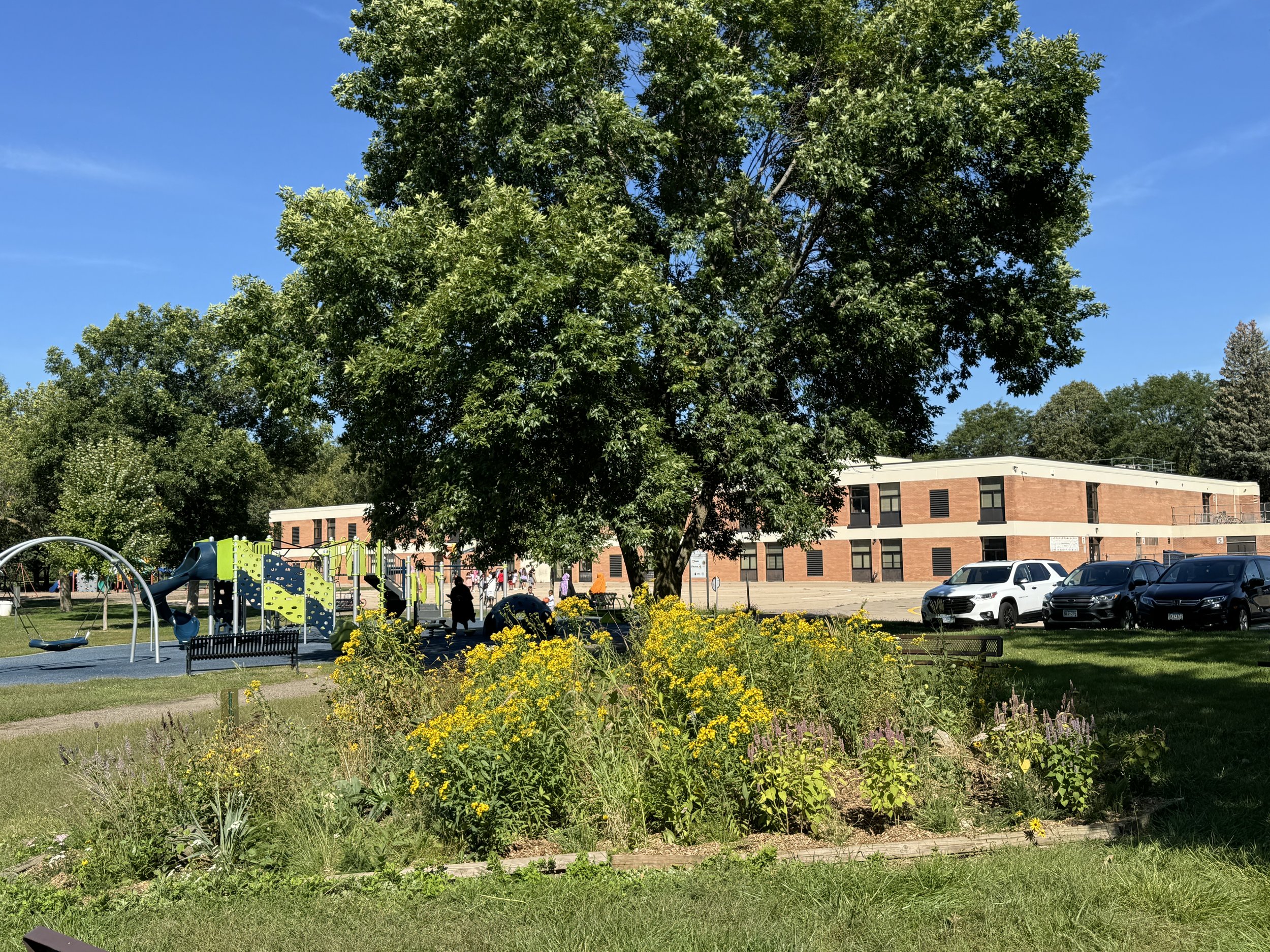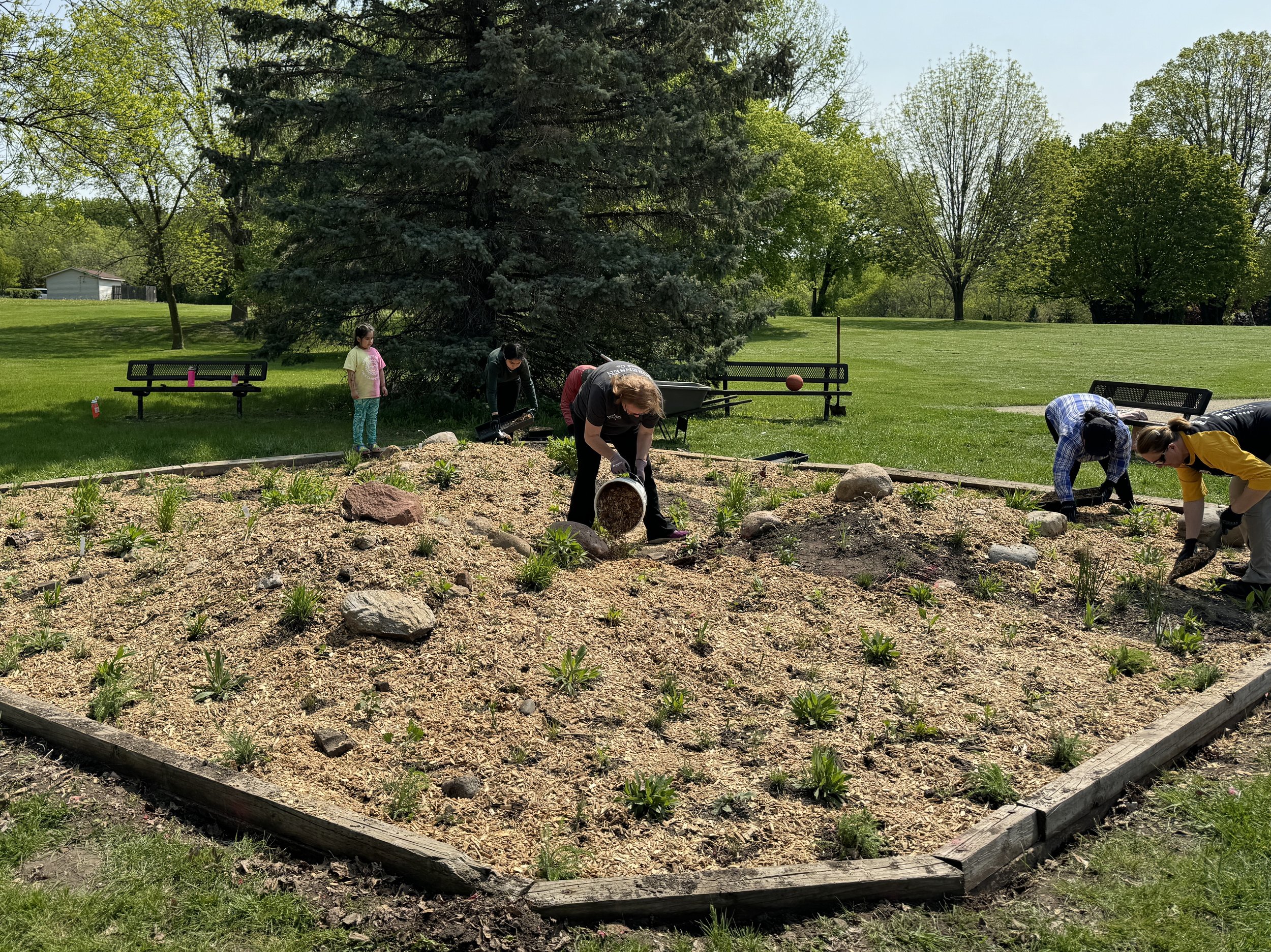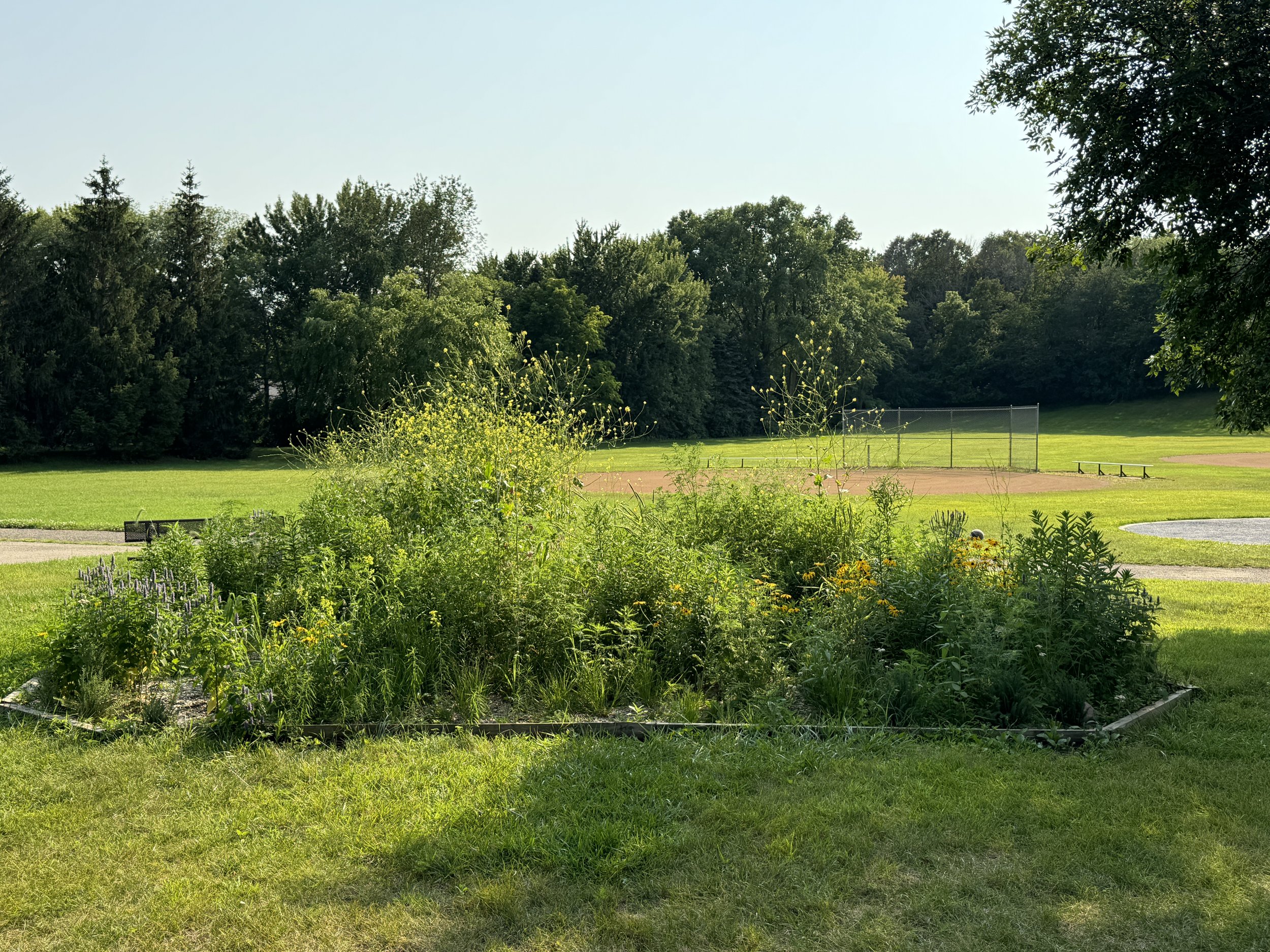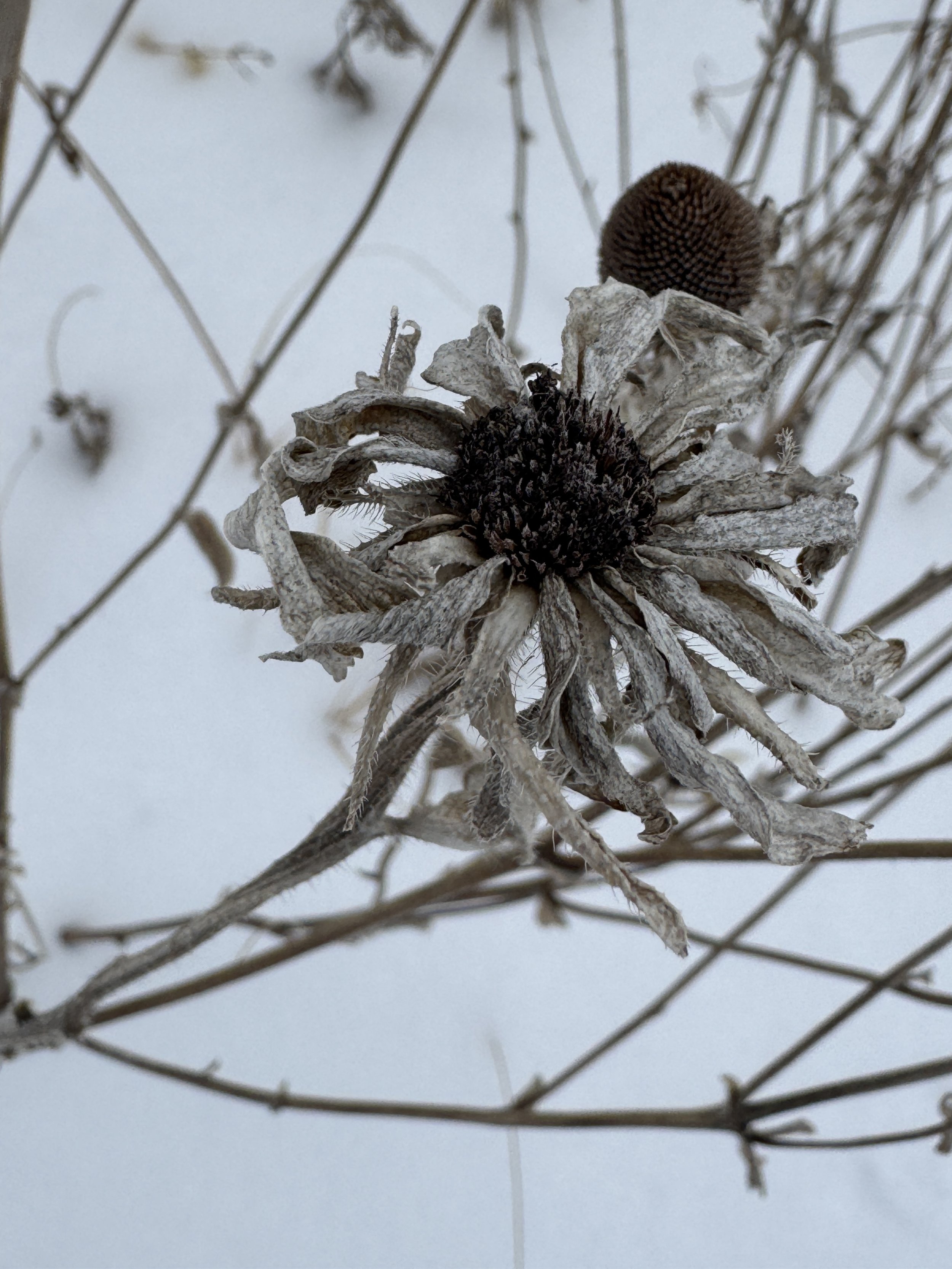The Living Classroom
Design concept: Plants that bloom in spring, early summer and fall have been selected so that the garden has interest during the academic school year. While summer is not forgotten we want to make sure this garden is investigated in all seasons. Therefore, the garden will also hold its shape in winter. Stems will be left for stem nesting insects to have breeding areas to raise their young and over winter. This garden symbolizes that even when divided by our differences we (and nature) can still work together to create a healthy community filled with diverse world views that unite in a shared value of educating our children to be good observers and stewards of nature.
Abstract: Behind Gideon Pond Elementary is a small garden plot roughly 400 square feet. This plot near the basketball courts and blue & green playground is surrounded by sitting benches bathed in excellent full sun coverage. In years past the garden was not maintained properly and was eventually overtaken by aggressive, weedy species of native and non-native plants, including some noxious weeds. There is a path near the garden that is not only traveled by students, faculty, staff and parents, but also by community members talking walks and riding bikes. This thoroughfare for our neighborhood is a crossing of sorts where our community meets nature. There have been many sightings of deer, turkey and other fauna in this area, however what lacks in this area is proper forage and nesting sites for song birds, insects and other pollinators. While a small woodland and many square feet of turf surround the school, there is not enough quality native habitat to support a healthy population of pollinators.
We can fix this by planting a Native Garden! The species selected and the accompanying layout are designed with multiple functions in mind:
1. Support native pollinators by providing food and habitat.
2. Provide teaching opportunities in science and ecology.
3. Be resistant to deer browse.
4. To have limited maintenance including watering and weeding.
5. Be attractive at multiple times during the year with an emphasis on Spring, Late Summer and Fall blooming plants so that students, faculty and staff can enjoy the wonders of nature.
6. Inspire the students, parents, faculty, staff and community members to plant native plants in their own yards.
